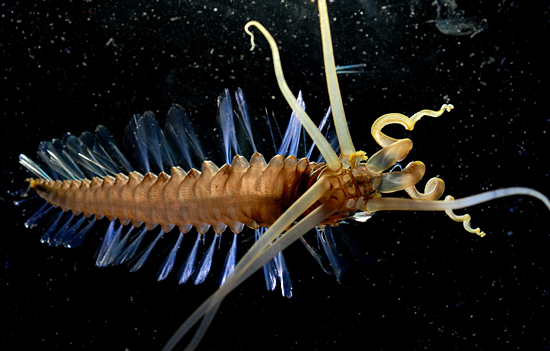“This illustrates how much we have to learn about even the large, common inhabitants of deep pelagic communities,” said Woods Hole Oceanographic Institute in Massachusetts and the Scripps Institute of Oceanography.
“When the image came onto the screen, everyone said, Oh my gosh, what’s that?” recalled marine zoologist Laurence Madin of the Woods Hole Oceanographic Institution in Massachusetts.
“This is an intermediate species between the benthic ancestors — things living in the mud on the seafloor — and other species that live in the water column but never go to the floor,” said Karen Osborn, an evolutionary biologist at the University of California, Santa Cruz. ”I was really excited,” Osborn added, “It was so tantalizing because the animal was so different from anything previously described, with the fantastic headgear. I would estimate that when exploring the deep water column, more than half the animals we see are undescribed or new to science.”
These are some of the examples of excitements among the scientists after the discovery of a new species under ocean water named as Squidworm. This species is neither a squid nor a worm. It is an especially exciting discovery because the species could represent a missing link, or transitional species.
Scientists at the Woods Hole Oceanographic Institute and the University of California, Santa Cruz have recently discovered the squidworm at around 3000 meters under ocean water, just above the ocean floor. The scientists used a remotely operated submersible robot to find squid. The species is named asTeuthidodrilus samae, or “squid worm of the Sama”—the Sama being a culture with ties to Philippine islands not far from the discovery site.
The Squidworm grows up to 9.4 centimeters (3.7 inches) in length. Swimming upright, it navigates by moving two body-length rows of thin, paddle-shaped protrusions that cascade like dominoes. It has ten tentacles as long or longer than its body stick out of its head, along with six pairs of curved nuchal organs that allow the squidworm to taste and smell underwater.




Recent Comments